- Home
- Haruki Murakami
Absolutely on Music: Conversations With Seiji Ozawa Page 3
Absolutely on Music: Conversations With Seiji Ozawa Read online
Page 3
MURAKAMI: Kind of like, “I’m going to make my music the way it’s supposed to be made and you can do the rest of it any way you choose.” So then in Gould’s solo parts and cadenzas and stuff, he’s creating his own world. But the two never quite meet—they feel like they’re slightly out of kilter.
OZAWA: Which doesn’t seem to bother Maestro Karajan at all, wouldn’t you say?
MURAKAMI: No, not at all. He’s totally immersed in his own world. And Gould’s going along at his own pace as if he’s given up any hope of working together right from the start. It’s as if Karajan is building his music straight up from the ground, and Gould’s looking out at the horizon the whole time.
OZAWA: Interesting, though, isn’t it, listening to it like this? I don’t think there’s any other conductor who could perform a concerto with such complete confidence as though it were a symphony, not giving any thought to the soloist.
Gould and Bernstein, Beethoven Piano Concerto no. 3 in C Minor
MURAKAMI: Now I’m going to put on an LP of the same Beethoven concerto, but this time it’s a studio recording made in 1959 by Gould and Bernstein with the Columbia Symphony Orchestra (composed of members of the New York Philharmonic), two years after the one with Karajan.
The orchestral introduction. It has a kind of directness, like hurling clay at a stone wall.
OZAWA: This is totally different from Maestro Karajan’s, isn’t it? It’s certainly not a symphony. But the sound of the orchestra is so old-fashioned!
MURAKAMI: I never thought of this performance as old-fashioned before, but listening to it right after the Karajan, it does have a kind of antique sound about it. It’s a newer recording, too.
OZAWA: No, it really is old-fashioned.
MURAKAMI: Could it be the recording?
OZAWA: Well, maybe, but it’s not just that. For one thing, they’ve got the mikes too close to the instruments. Everybody used to do it that way in the States. Maestro Karajan’s recording captures the orchestra’s overall sound.
MURAKAMI: Maybe American listeners preferred that—a forceful, deadish kind of sound.
Gould’s piano enters (3:31).
OZAWA: This is two years later than the other one?
MURAKAMI: It’s three years before the fuss over the Brahms, two years after the performance with Karajan. What a contrast with the Karajan!
OZAWA: Yes, this one is much more Glenn-style. A lot more relaxed. But to tell you the truth…hmmm…I wonder if it’s okay for me to say this…I really shouldn’t start comparing Karajan and Bernstein. I’m thinking of the word “direction”—the direction of the music. In Maestro Karajan’s case, he had it from birth—the ability to make long phrases. It was something he taught us, the ones who studied with him. Lenny was more what you’d call a genius. He had an instinctive ability to make long phrases, but he couldn’t do it consciously, intentionally. In Maestro Karajan’s case, he would set his desires in motion by sheer force of will—in Beethoven, say, or Brahms. So when Karajan was conducting a Brahms, for example, his will had this overwhelming strength. And he would give it priority even if that meant sacrificing details of the ensemble. He demanded the same thing from us disciples.
MURAKAMI: Sacrificing details of the ensemble…
OZAWA: Meaning if the specific details didn’t all work together, you didn’t let it worry you. The most important thing was to maintain this long, bold line. In other words, “direction.” In music, direction involves elements of linking. You have detailed direction and long direction.
The orchestra plays an ascending three-note figure behind the piano.
OZAWA: These three notes are a case of direction, too: “La, la, la.” Some people can make them as they go along and some people can’t, these parts that flesh out the music.
MURAKAMI: So in Bernstein’s case, regarding what you call “direction,” it’s not so much mental calculation as instinct, something almost physical.
OZAWA: Something like that, I suppose.
MURAKAMI: And when he does it well, it’s fine, but when he doesn’t, things can come apart.
OZAWA: Right. By contrast, Maestro Karajan sets up the direction clearly beforehand, and he clearly demands it from the orchestra.
MURAKAMI: The music has already formed inside him before the performance.
OZAWA: Pretty much.
MURAKAMI: But Bernstein’s not like that.
OZAWA: Maybe not. He’s doing it more on the spot, instinctively.
The recording continues. Gould takes a relaxed approach with the solo (4:33-5:23).
OZAWA: Here, Glenn is being truly free with the music.
MURAKAMI: You mean, compared with the Karajan performance we just heard, Bernstein lets his soloist play more freely—and to some extent he makes his music conform to the flow of the piano? Is that it?
OZAWA: There is some of that, I’d say—in this piece, at least. But with the Brahms, it’s not so easy to do, so they had that problem we talked about—especially with that particular piece, the First Piano Concerto.
In the solo, Gould slows his phrasing way down and draws it out (5:01–5:07).
OZAWA: Now that’s Glenn Gould, where he slo-o-o-ws it down like that.
MURAKAMI: He changes the rhythm so freely. That’s his style—if he were a writer, I might say it’s the way he delivers his sentences. It must be hard to accompany.
OZAWA: Yes, of course it’s hard.
MURAKAMI: So in rehearsal, that means you have to understand his breathing and try to match it?
OZAWA: Well, yes, but when you’re dealing with musicians of this caliber, they can do it in the actual performance, too. Both sides carefully calculate their moves, though it’s not so much a question of calculation as it is of trust. I tend to be on the receiving end of that trust—they take me too seriously. [Laughs.] So, often, soloists will do anything they like with me. [Laughs.] When a performance like that goes well, though, it’s fantastic. The music sounds so free.
The piano plays a descending passage, at the end of which the orchestra enters (7:07–7:11).
OZAWA: Did you notice that? Near the end of the descending passage, just before the orchestra entered, Glenn added a kind of pon! sound to the note [7:10].
MURAKAMI: Added?
OZAWA: Sending a signal to the conductor, saying, “Come in here.” An accent that is not in the written score. It’s just not there.
The piano begins the famous long cadenza near the end of the first movement (13:06).
OZAWA: He’s down low, on that low chair of his, playing like this. [He sinks down in his chair.] I’m not sure what that’s all about.
MURAKAMI: Was Gould already popular back then?
OZAWA: Yes, he was. I was thrilled the first time I met him, of course. But he wouldn’t shake hands. He always had gloves on.
MURAKAMI: He was a real eccentric, I guess.
OZAWA: I heard all kinds of weird stories about him when I was music director of the Toronto Symphony Orchestra [from 1965 to 1969]. He invited me to his house, too…
Murakami note: Unfortunately, some of the anecdotes revealed at this point cannot be committed to print.
Final part of the cadenza. The pacing of the notes undergoes dizzying change.
MURAKAMI: His interpretation here is absolutely free, isn’t it?
OZAWA: Pure genius. Utterly convincing. But it’s very different from the score. Still, it doesn’t sound at all strange.
MURAKAMI: When you say things are not in the score, you don’t mean just in the cadenza or other solo parts, do you?
OZAWA: No, not just there. That’s what’s so great about this.
The first movement ends (17:11). I lift the needle.
MURAKAMI: You know, I first heard this Gould and Bernstein recording when I was in high school, and ever since then, this version of the C Minor Concerto has been one of my favorites. I like the first movement, of course, but in the second movement there’s that wonderful part where Gould backs up the orche
stra with arpeggios.
OZAWA: You mean, where the woodwinds are playing…
MURAKAMI: Right, right. An ordinary pianist would make it sound like a straightforward accompaniment, but with Gould you get the feeling that he’s playing in direct counterpoint with the orchestra. I’ve always liked that part for some reason. It’s totally different from other pianists’ performances.
OZAWA: He would have to be overwhelmingly self-confident to do something like that. Let’s listen to it. It just so happens I’m working on this piece now. I’m going to be playing it soon with Mitsuko Uchida. In New York. With the Saito Kinen Orchestra.
MURAKAMI: I’m looking forward to that. I wonder how that performance will go.
I turn the record over and start the second movement, but first we take a short break to drink hot hōjicha tea and eat rice cakes.
MURAKAMI: I would guess that this second movement is difficult to conduct.
OZAWA: It is!
MURAKAMI: I mean, it’s so slow! It’s beautiful, though.
The piano plays solo. The orchestra enters quietly (1:19).
MURAKAMI: The orchestra’s sound is a lot less hard than it was in the first movement.
OZAWA: Yes, it’s much better.
MURAKAMI: Maybe they were tense before?
OZAWA: Maybe.
MURAKAMI: The first movement has a real tension running through it. At first it sounded as if there was maybe a duel going on between the soloist and the conductor. Judging from various performances, there seem to be two distinct approaches to the first movement: a confrontational mode and a collaborative mode. Take the 1944 live recording of Rubinstein and Toscanini—it sounds as if the two are fighting. Have you heard it?
OZAWA: No, never.
The woodwinds play, and Gould adds his arpeggios (4:19-5:27).
OZAWA: Here it is—the part you were talking about.
MURAKAMI: Yes, this is it. The piano is supposed to be accompanying the orchestra, but Gould’s touch is so clear and deliberate.
OZAWA: No, this is certainly not an accompaniment—not in Glenn’s mind, at least.
Gould ends a phrase, takes a brief pause, and moves on to the next phrase (5:40).
OZAWA: Now that—where he took that pause—that’s absolutely Glenn at his freest. It’s the hallmark of his style, those perfectly timed empty spaces.
The piano and orchestra intertwine beautifully for a while.
OZAWA: Now, we’re completely in Glenn Gould’s world. He’s totally in charge now. In Japan we talk about ma in Asian music—the importance of those pauses or empty spaces—but it’s there in Western music, too. You get a musician like Glenn Gould, and he’s doing exactly the same thing. Not everybody can do it—certainly no ordinary musician. But somebody like him does it all the time.
MURAKAMI: Ordinary musicians don’t do it?
OZAWA: No, never. Or if they do, the spaces don’t fit in as naturally as this. It doesn’t grab you—you don’t get drawn in as you do here. That’s what putting in these empty spaces, or ma, is all about, isn’t it? You grab your audience and pull them in. East or West, it’s all the same when a virtuoso does it.
MURAKAMI: I know of only one recording that you made of this concerto—with Rudolf Serkin and the Boston Symphony in 1982.
OZAWA: Yes, that was it. We recorded the complete Beethoven piano concerti. We were supposed to do the complete Brahms, too, but he became ill and died not much later.
MURAKAMI: That’s a shame.
The orchestra plays a long, quiet phrase.
MURAKAMI: It must be tough for the orchestra to draw out a long, slow note like this.
OZAWA: It is, very tough.
Piano and orchestra intertwine at a slow tempo.
OZAWA: Oh! They’re not together here.
MURAKAMI: You’re right, they’re coming apart.
OZAWA: I was just counting the beat, and maybe he is being a little too free.
MURAKAMI: The Karajan and Gould performance we heard had some pretty disjointed parts, too, didn’t it?
An extraordinarily slow piano solo.
MURAKAMI: There can’t be too many pianists who can play this second movement without making it sound draggy and boring.
OZAWA: No, it’s true.
The second movement ends (10:47).
OZAWA: The first time I ever conducted this concerto, it was with the pianist Byron Janis. We performed it at the Ravinia Festival in Chicago.
MURAKAMI: Oh, yes, I’ve heard of Byron Janis.
OZAWA: The next was Alfred Brendel. I played the Beethoven Third with him in Salzburg. The next one was probably Mitsuko Uchida. And Serkin came after that.
Serkin and Bernstein, Beethoven Piano Concerto no. 3 in C Minor
MURAKAMI: I’d like you to listen to one more recording of the Third Piano Concerto.
OZAWA: Fine.
The first movement begins. Opening passage. Uptempo orchestra.
OZAWA: Now, this feels completely different again. It’s fast. Wow, it is really fast! They’re galloping.
MURAKAMI: Is it rough?
OZAWA: It is rough, and they’re galloping along.
MURAKAMI: There’s a nervous energy in the ensemble playing, too, wouldn’t you say?
OZAWA: I would.
The orchestral introduction ends, and the piano charges in at breakneck speed (3:08).
OZAWA: They’re both going at it with tremendous gusto. They’re perfectly matched.
MURAKAMI: Full speed ahead for both of them! But still, they’re gliding along smoothly.
OZAWA: The conductor is clearly using duple time, conducting in 2/2 rather than 4/4.
MURAKAMI: You mean, because the tempo is too fast, he can’t help conducting it in 2/2 time?
OZAWA: There are some old printed scores that have it in 2/2, though nowadays 4/4 is considered correct. But the opening of this performance is clearly in 2/2. That’s why it sounds as if it’s gliding along.
MURAKAMI: You mean to say they decide to do it in 2/2 or 4/4 depending on the speed of the piece?
OZAWA: That’s right. If you’re going to slow it down somewhat, you have to do it in 4/4. Current research seems to indicate that 4/4 is correct, but back when I was studying it, you could go either way.
MURAKAMI: I didn’t know that. This performance is by Rudolf Serkin and Leonard Bernstein with the New York Philharmonic. It was recorded in 1964, five years after the recording with Gould.
OZAWA: It’s kind of an inconceivable performance.
MURAKAMI: Why are they in such a hurry?
OZAWA: I can’t imagine.
MURAKAMI: I don’t think of Rudolf Serkin as a speed demon on the piano. Were performances like this in fashion at that time?
OZAWA: Maybe so. But 1964…hmm…Back then, there was a lot of attention paid to the influence on performance styles by early music, and those tended to be uptempo without many sustained notes. Also, stringed instruments had shorter bows. Maybe that has something to do with it. “Breathless” would be a way to describe this. It’s so un-German!
MURAKAMI: Did the New York Philharmonic tend to be that way?
OZAWA: Well, sure, compared with the Berlin Philharmonic or the Vienna Philharmonic, it couldn’t help missing some of that German sound.
MURAKAMI: And I suppose the Boston Symphony Orchestra is different in its own way.
OZAWA: That’s true. Boston has a milder sound. They don’t do performances like this. The musicians wouldn’t like it.
MURAKAMI: Is the Chicago Symphony Orchestra closer to New York Philharmonic?
OZAWA: Yes. But the Cleveland Orchestra would never do a performance like this. Cleveland is more like Boston, even milder. This is way too wild for them. But the orchestra aside, I can hardly believe this is Serkin at the piano, just gliding along.
MURAKAMI: Do you think this was Bernstein wanting to resist the Karajan version of the Beethoven world?
OZAWA: Maybe so. But Lenny made the last movement of Beethoven’
s Ninth incredibly slow! It might not be available on record. I saw it on television—one he did in Salzburg, probably with the Berlin or Vienna Philharmonic. It was so slow, I was thinking, “No way!” You know what I’m talking about—the vocal quartet at the end. That part.
I Really Wanted to Do German Music
MURAKAMI: You were saying before that you were with the New York Philharmonic. Did you go to Berlin after that?
OZAWA: Yes. After my first time in Berlin, I was Lenny’s assistant with the New York Philharmonic, and then I was called back to Berlin by Maestro Karajan. That’s where I debuted. I had my first paying job conducting there. I conducted orchestral works by Maki Ishii and Boris Blacher and a Beethoven symphony—the First or the Second, I’m not sure which.
MURAKAMI: How long were you in New York?
OZAWA: Two and a half years: 1961, 1962, part of 1963. I conducted the Berlin Philharmonic in 1964.
MURAKAMI: Back then, the sound of those two orchestras was as different as night and day—the New York and the Berlin.
OZAWA: Well, sure, they were totally different. They still are. Even now, with communications so developed, with performers moving so freely among orchestras, and the globalization of culture, they’re still totally different.
MURAKAMI: But the sound of the New York Philharmonic in the first half of the sixties was especially hard and aggressive.
OZAWA: Yes, that was Lenny’s time. Take his Mahler recordings: they have a hard edge. But this performance we just heard: I’ve never heard anything of his glide along like that.
MURAKAMI: The Gould we heard before doesn’t glide along smoothly like that, either. It’s got a pretty hard sound. Do you think it was something that American listeners preferred?

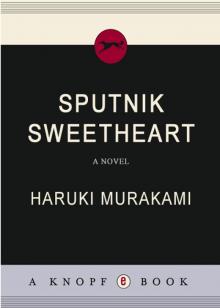 Sputnik Sweetheart
Sputnik Sweetheart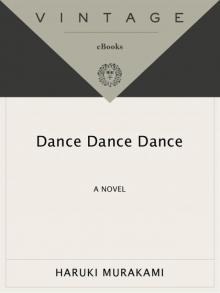 Dance Dance Dance
Dance Dance Dance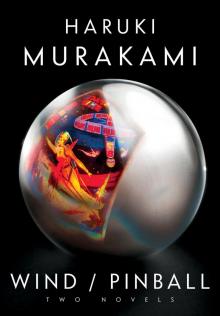 The Wind (1) and Up Bird Chronicle (2)
The Wind (1) and Up Bird Chronicle (2) Blind Willow, Sleeping Woman
Blind Willow, Sleeping Woman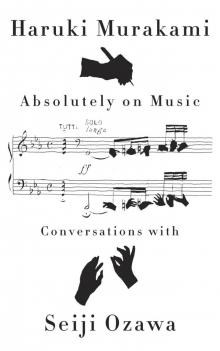 Absolutely on Music: Conversations With Seiji Ozawa
Absolutely on Music: Conversations With Seiji Ozawa Norwegian Wood
Norwegian Wood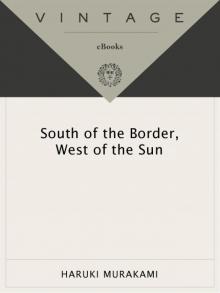 South of the Border, West of the Sun
South of the Border, West of the Sun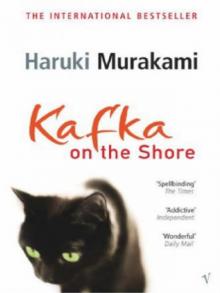 Kafka on the Shore
Kafka on the Shore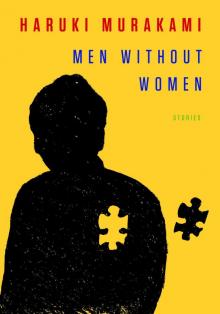 Men Without Women
Men Without Women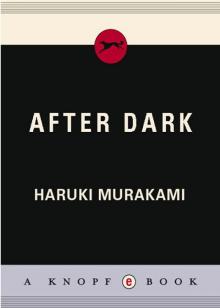 After Dark
After Dark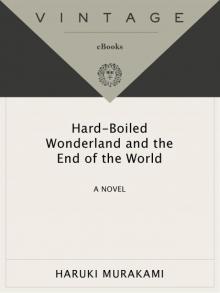 Hard-Boiled Wonderland and the End of the World
Hard-Boiled Wonderland and the End of the World 1q84
1q84 The Wind-Up Bird Chronicle
The Wind-Up Bird Chronicle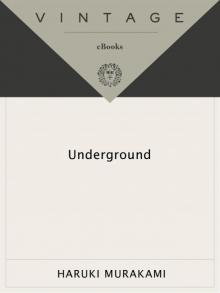 Underground: The Tokyo Gas Attack and the Japanese Psyche
Underground: The Tokyo Gas Attack and the Japanese Psyche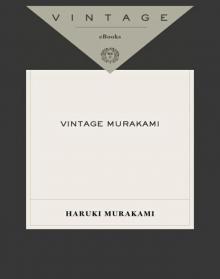 Vintage Murakami
Vintage Murakami The Elephant Vanishes: Stories
The Elephant Vanishes: Stories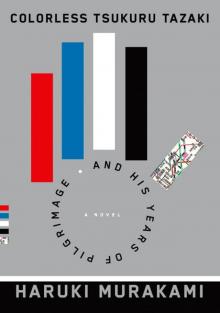 Colorless Tsukuru Tazaki and His Years of Pilgrimage
Colorless Tsukuru Tazaki and His Years of Pilgrimage First Person Singular
First Person Singular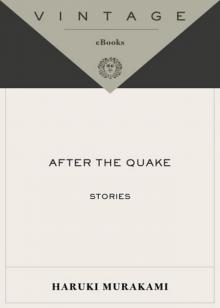 After the Quake
After the Quake A Wild Sheep Chase
A Wild Sheep Chase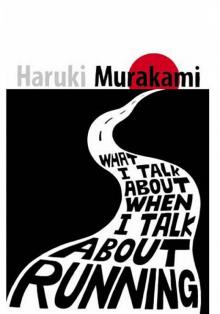 What I Talk About When I Talk About Running
What I Talk About When I Talk About Running Birthday Girl
Birthday Girl The Elephant Vanishes
The Elephant Vanishes Norwegian Wood (Vintage International)
Norwegian Wood (Vintage International)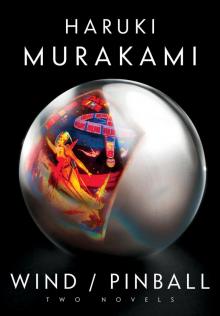 Wind/Pinball
Wind/Pinball Norwegian Wood Vol 1.
Norwegian Wood Vol 1.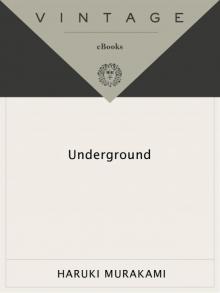 Underground
Underground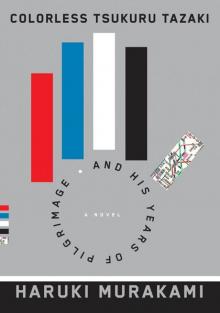 Colorless Tsukuru Tazaki and His Years of Pilgrimage: A novel
Colorless Tsukuru Tazaki and His Years of Pilgrimage: A novel Killing Commendatore
Killing Commendatore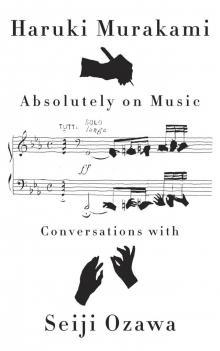 Absolutely on Music
Absolutely on Music